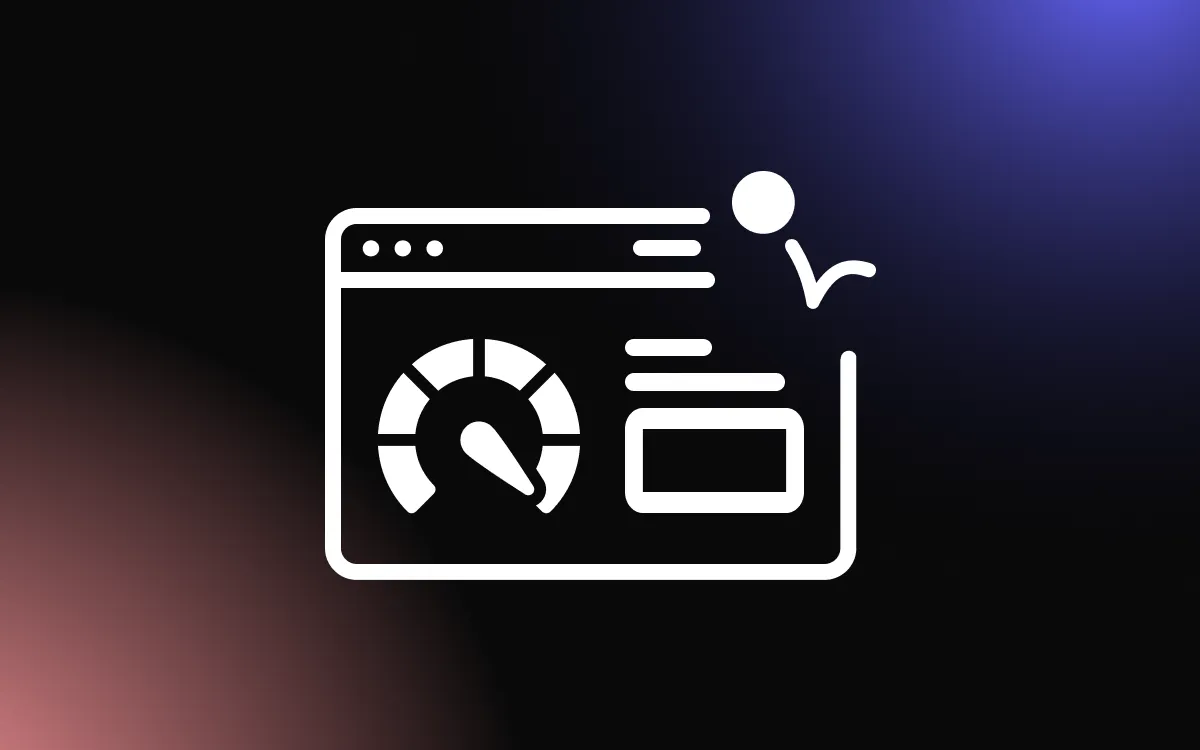
In today's digitized era, where every interaction, click, and view can be measured, making decisions based on data is critical for success. A particularly powerful technique to inform these decisions is A/B testing, also known as split testing.
A/B testing is a method that involves comparing two variants of a webpage or another user experience to ascertain which one yields better performance. It's a method that allows you to test changes to your webpage against its current design and ascertain which one garners better results.
A/B testing holds immense significance when it comes to enhancing your website's conversion rates. Conversion rates, defined as the percentage of visitors to your website who accomplish a desired goal, are a vital metric in digital marketing. With A/B testing, you can make alterations to your website based on factual data rather than assumptions. This enables you to optimize your website in a manner that truly aligns with your audience's preferences and boosts conversions.
In this all-encompassing guide, we will delve deep into the realm of A/B testing. We'll dissect what A/B testing entails, its importance, and how you can harness it to augment your website's conversion rates. Moreover, we will furnish practical tips and strategies for effective A/B testing, and discuss how to analyze and interpret your results.
Whether you're a seasoned marketer or a novice, this article will offer valuable insights into the potency of A/B testing. So, fasten your seatbelts and get set to plunge into the world of data-driven decision-making.
What Is A/B Testing?
A/B testing, also known as bucket testing, split-run testing, or split testing, is a user experience research methodology. It involves conducting a randomized experiment with two variants, A and B, to determine which one performs better. These variants are typically two versions of a webpage or other user experience that differ in one or more elements.
In an A/B test, a portion of your audience is shown version A (the control), while another portion is shown version B (the variant). The performance of each version is then measured using a specific metric, such as click-through rate or conversion rate. The version that performs better according to the chosen metric is deemed the more effective version.
The beauty of A/B testing lies in its simplicity and effectiveness. By changing one element at a time, you can pinpoint exactly which changes lead to improvements in your metric of interest. This allows you to make data-driven decisions about what changes to implement on your website.
A/B testing is widely used in digital marketing and user experience design, among other fields. Large social media sites like LinkedIn, Facebook, and Instagram use A/B testing to optimize their user experiences and streamline their services.
The Importance of A/B Testing

A/B testing serves as a crucial instrument for fine-tuning your website. It offers the advantage of making decisions about alterations to your website based on concrete data, eliminating the element of guesswork from website optimization. By juxtaposing two versions of a webpage or app, you can figure out which one yields superior performance concerning a specific conversion objective.
The essence of A/B testing lies in its potential to influence your profitability. By experimenting with different versions of your website, you can pinpoint modifications that boost conversions, whether it's clicking on a link, submitting a form, or executing a purchase. Consequently, you can optimize your website to promote these activities, leading to an uptick in revenue.
Furthermore, A/B testing allows for the continuous enhancement of your user experience. By evaluating different components of your website, ranging from headlines and pictures to the comprehensive layout, you can discern what resonates profoundly with your audience. This enables you to craft a website that not only aligns with your business goals but also ensures a gratifying experience for your users.
What's more, A/B testing can aid you in averting expensive blunders. By examining a change before its full-scale implementation, you can evade pouring resources into a website overhaul or new feature that doesn't actually augment your conversion rate or worse yet, triggers a decline.
A/B Testing vs. Multivariate Testing

A/B testing and multivariate testing are both handy tools for enhancing your website, yet they cater to different needs and are utilized under varying circumstances.
As we've delved into, A/B testing revolves around evaluating two variants of a webpage (namely A and B) that exhibit a single difference. This approach is simple and effective for assessing a single modification and gauging its influence on your conversion rate.
Contrarily, multivariate testing entails the examination of multiple factors at once. Rather than simply testing two renditions of a webpage, you might scrutinize several distinct elements simultaneously to perceive how they interrelate. This method can yield more intricate insights, but it also necessitates more traffic and resources to obtain statistically meaningful outcomes.
How A/B Testing Works

The Process of A/B Testing
A/B testing is a systematic process that allows you to compare two versions of a webpage or app to determine which one performs better. Here's a step-by-step guide on how to conduct A/B testing:
- Identify a Goal: Your goal is the metric that you plan to improve through A/B testing. It could be anything from increasing the number of sign-ups, reducing the bounce rate, or improving the click-through rate.
- Generate Hypothesis: Based on data and insights, generate a hypothesis that you believe will help you achieve your goal. For example, you might hypothesize that changing the color of a call-to-action button will increase click-through rates.
- Create Variations: Using your A/B testing software, create a variation of your webpage that reflects your hypothesis. This could involve changing a headline, swapping an image, or repositioning a button.
- Split Your Audience: Divide your audience into two groups. One group sees the original version of your webpage (control), while the other sees the modified version (variation).
- Conduct the Test: Run the test for a specified period or until you have enough data for a statistically significant result. Your A/B testing software will randomly assign visitors to either the control or variation group and track their interactions.
- Analyze Results: Once the test is complete, analyze the results. Your A/B testing software will provide data on how each version of your webpage performed relative to your goal.
- Implement Changes: If the variation performed better than the control, consider implementing the changes on your website. If not, use the insights gained to formulate a new hypothesis and run a new test.
Tools for A/B Testing
Here are some of the top tools available for A/B testing:
- HubSpot's A/B Testing Kit: This free tool provides a how-to guide for instruction and inspiration in an easy-to-use spreadsheet. It comes with a statistical significance calculator to help you understand if your tests were wins, losses, or inconclusive.
- Google Optimize: Part of the Google Marketing Platform, Google Optimize offers tools to help you improve your website and create personalized experiences for your audience segments. It's natively integrated with Google Analytics, helping you seamlessly learn about your experiments and the most effective tests.
- Freshmarketer: Starting at $19/month, Freshmarketer is a powerful tool to test, target, and validate your experiments and track revenue. It offers session replays, giving you unique views into how individual users interact with your website.
- VWO: VWO is an A/B testing and conversion rate optimization tool for enterprise brands. It allows you to create and run multiple A/B, multivariate, and split URL tests simultaneously and automatically drive traffic to the best-performing variations.
- Optimizely: Optimizely is a digital experimentation platform for enterprise marketing, product, and engineering teams. It allows you to run unlimited concurrent experiments, ensuring you're always testing and iterating to create the most powerful customer experience.
- Omniconvert: Starting at $167/month, Omniconvert is a CRO platform with an A/B testing tool to run tests on desktop, mobile, and tablet. It's best for e-commerce businesses.
- Crazy Egg: Starting at $24/month, Crazy Egg is a website optimization software that helps you easily test variations of your site pages with a single snippet of code. Its Snapshots feature gives you a side-by-side comparison of your detailed reports to learn how your changes and optimizations compare.
- AB Tasty: AB Tasty's conversion rate optimization software helps your teams build and run A/B tests, split tests, multivariate tests, and funnel tests. You can set goals for your experiments, so your data reports help you focus on the exact conclusions you're looking for.
Using A/B Testing to Improve Conversion Rates
Identifying What to Test
Determining what elements to experiment with in an A/B test is a key part of the process. It's not as simple as randomly selecting components of your website and modifying them. Rather, it's about gaining a deep understanding of your users, their behaviors, and which parts of your website significantly influence their actions.
Begin by diving into your website data. Employ tools such as Google Analytics to grasp where your users spend most of their time, what draws their interaction, and at what point they tend to leave. This analysis will provide you with a good sense of the elements that play a crucial role in the user journey.
Subsequently, think about your business objectives. Are you aiming to elevate the number of sign-ups, drive up sales, or bolster engagement? These goals will guide you in pinpointing the elements to test. For example, if your goal is to increase sign-ups, you might experiment with the design, location, and wording of your sign-up form.
Also, pay heed to feedback from your users. If users repeatedly comment on a specific part of your website, that's a strong indicator that changes to that element should be put to the test.
Typical elements to test include headlines, calls to action, images, product descriptions, layouts, and forms. However, keep in mind that what proves successful for one website may not necessarily work for another. The secret is to keep testing, absorbing the lessons, and refining your approach.
Lastly, organize your tests based on potential impact and the ease of implementation. Start with tests that are straightforward to execute and have a high potential of influencing your conversion rates.
Setting Up Your A/B Test
Setting up an A/B test involves a systematic process that ensures you're making data-informed decisions.
Here's a step-by-step guide on how to set up an A/B test:
- Collect Data: Start by gathering data from your analytics tool, such as Google Analytics. Look for high-traffic areas on your site or app as these allow you to gather data faster. For conversion rate optimization, identify pages with high bounce or drop-off rates that can be improved.
- Identify Goals: Your conversion goals are the metrics you use to determine whether the variation is more successful than the original version. Goals can be anything from clicking a button or link to product purchases.
- Generate Test Hypothesis: Once you've identified a goal, you can begin generating A/B testing ideas and hypotheses for why you think they will be better than the current version. Prioritize these ideas based on expected impact and difficulty of implementation.
- Create Variations: Using your A/B testing software, make the desired changes to an element of your website or mobile app. This could be changing the color of a button, swapping the order of elements on the page, hiding navigation elements, or something entirely custom.
- Run Experiment: Kick off your experiment and wait for visitors to participate! Visitors to your site or app will be randomly assigned to either the control or variation of your experience. Their interaction with each experience is measured, counted, and compared to determine how each performs.
- Wait for Test Results: Depending on your sample size, it can take a while to achieve a satisfactory result. Good experiment results will tell you when the results are statistically significant and trustworthy.
- Analyze Results: Once your experiment is complete, analyze the results. Your A/B testing software will present the data from the experiment and show you the difference between how the two versions of your page performed, and whether there is a statistically significant difference.
Analyzing A/B Test Results
Interpreting the results of an A/B test is a critical step in the process. After collecting substantial data, you'll compare the performance metrics of Version A and Version B. You're primarily interested in which version yielded a higher conversion rate, though other metrics such as click-through rates or time spent on page may also be important, depending on your goals.
You'll use statistical analysis to determine if the differences you observe are significant, or merely due to chance. Remember, though the end-goal is conversion rate improvement, negative results are also valuable, giving you insights into what doesn't work for your audience.
Implementing Changes Based on A/B Test Results
Once you've interpreted your A/B test results, it's time to apply those insights to your website. The winning version should become your new standard. However, the learning doesn't stop there. Each test provides a wealth of information about your audience's preferences.
Implement the successful elements broadly across your site, but don't discard unsuccessful tests. Instead, use these 'failures' as valuable feedback on what not to do. Keep iterating, testing, and learning. Over time, this process of incremental improvements based on actual user data will lead to a significant boost in your website's conversion rates.
Common Mistakes in A/B Testing

A/B testing can be an incredibly useful tool in improving your website's conversion rates, but there are several common pitfalls you must avoid to ensure accurate and useful results. One of the most common mistakes is testing too many variables at once. This can make it challenging to determine which change influenced the results, leading to confusion rather than clarity. Instead, aim to test one element at a time for clearer causation.
Another common mistake is not allowing the test to run long enough. Gathering sufficient data is crucial to ensure your results are statistically significant and not just due to random chance. At the same time, avoid running tests for too long as this can introduce other variables such as seasonal changes in user behavior.
Ignoring the context is another trap. For instance, if you’re running multiple marketing campaigns simultaneously, they could influence the test's outcome. Always be aware of external factors that might skew your results.
Finally, don’t be too quick to apply the winning results across your entire website without further validation. What works for one page may not necessarily work for another. Remember, A/B testing is about learning and iterating, not looking for a one-time silver bullet.
Conclusion
In a world that is increasingly digital, understanding and optimizing your online presence is paramount. A/B testing is a powerful tool that empowers businesses to make data-driven decisions and enhance their websites' conversion rates. It not only aids in understanding your audience's preferences but also takes the guesswork out of website optimization, ensuring that every change you make is backed by tangible data.
Remember, while A/B testing may seem intimidating at first, the potential benefits in terms of engagement and revenue generation are significant. It's all about learning, iterating, and refining. Even failed tests offer valuable insights that can be used to improve future efforts.
So, don't wait. Begin your journey into A/B testing and start unlocking the full potential of your website today. Your audience and your bottom line will thank you for it.


